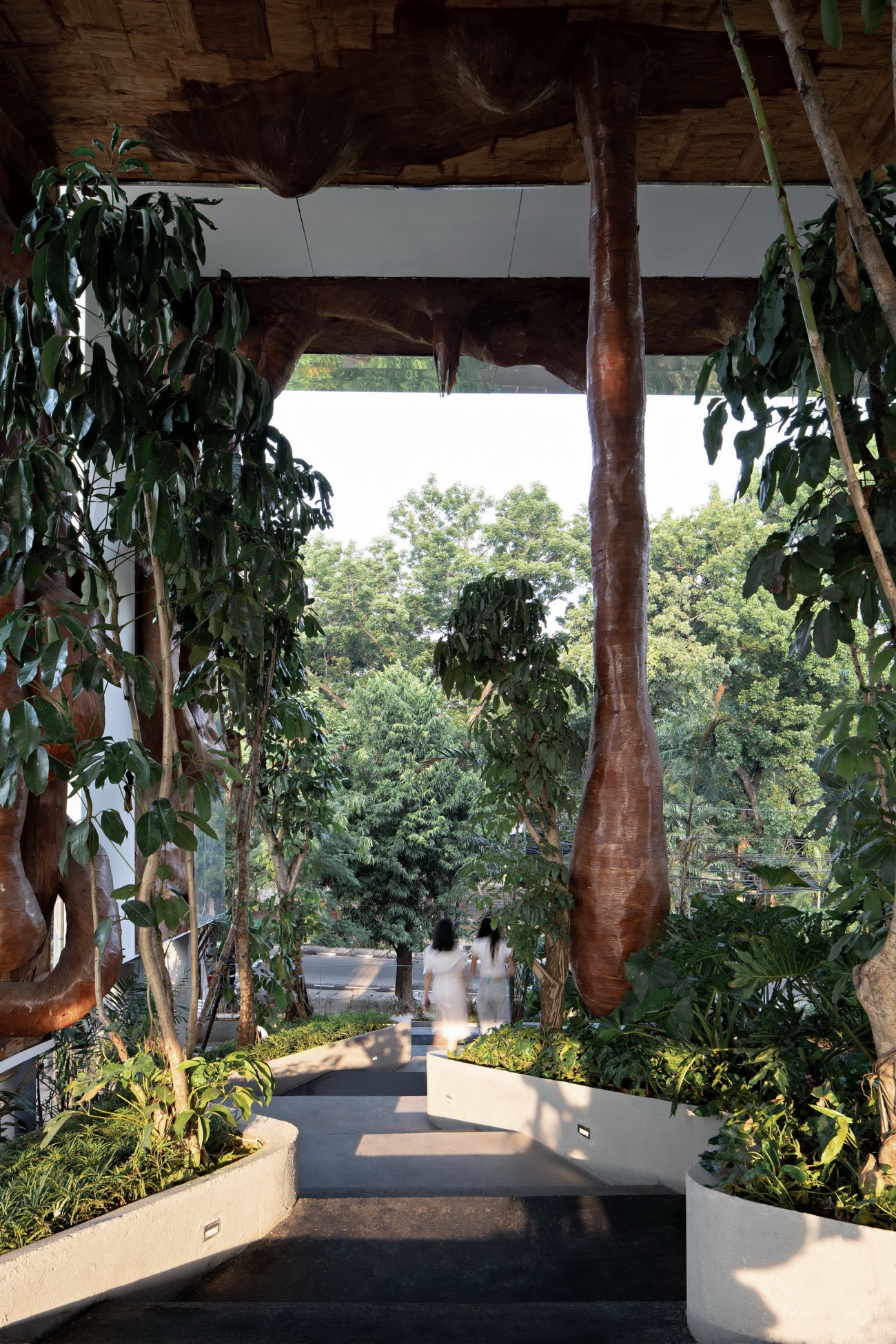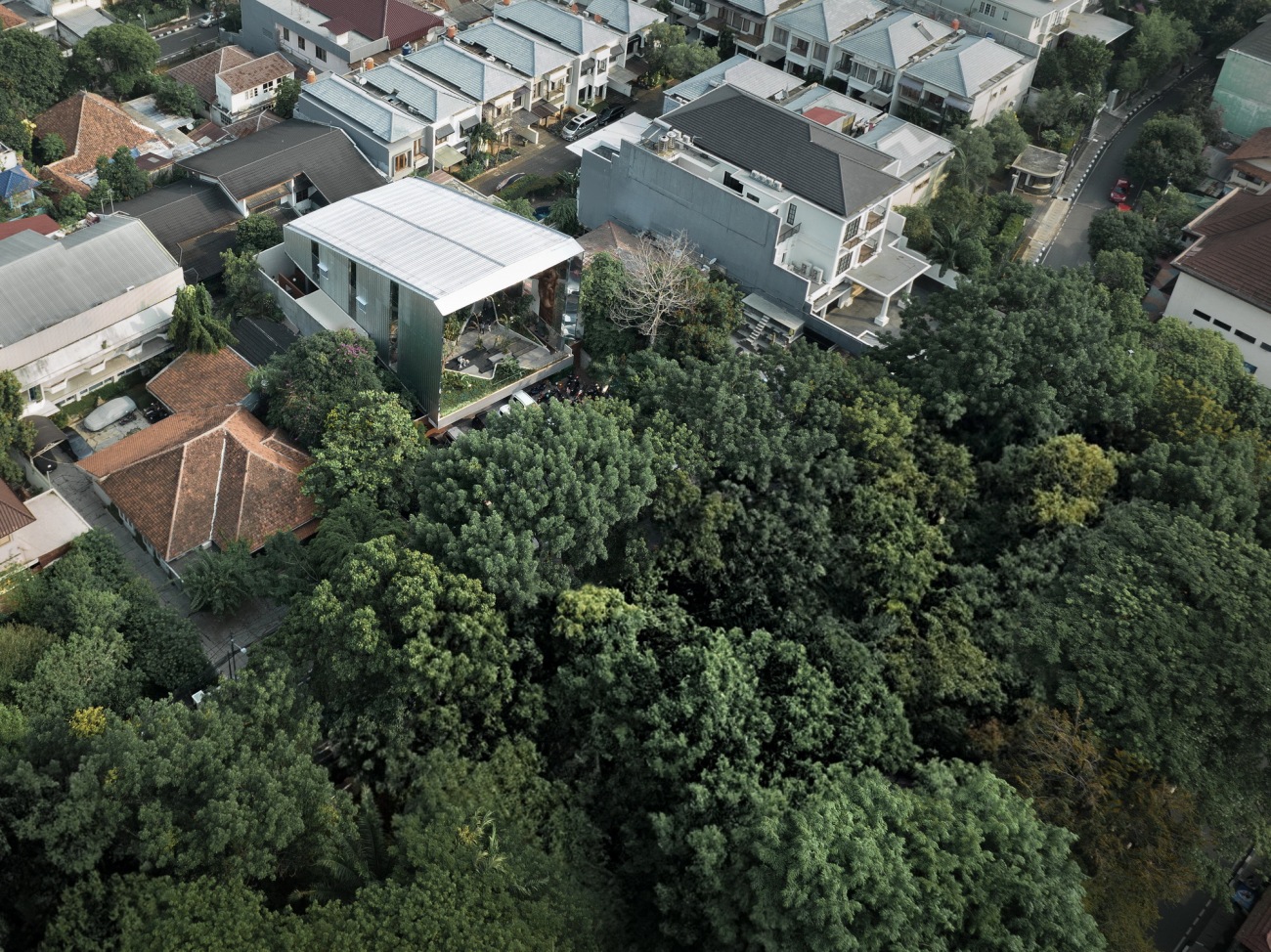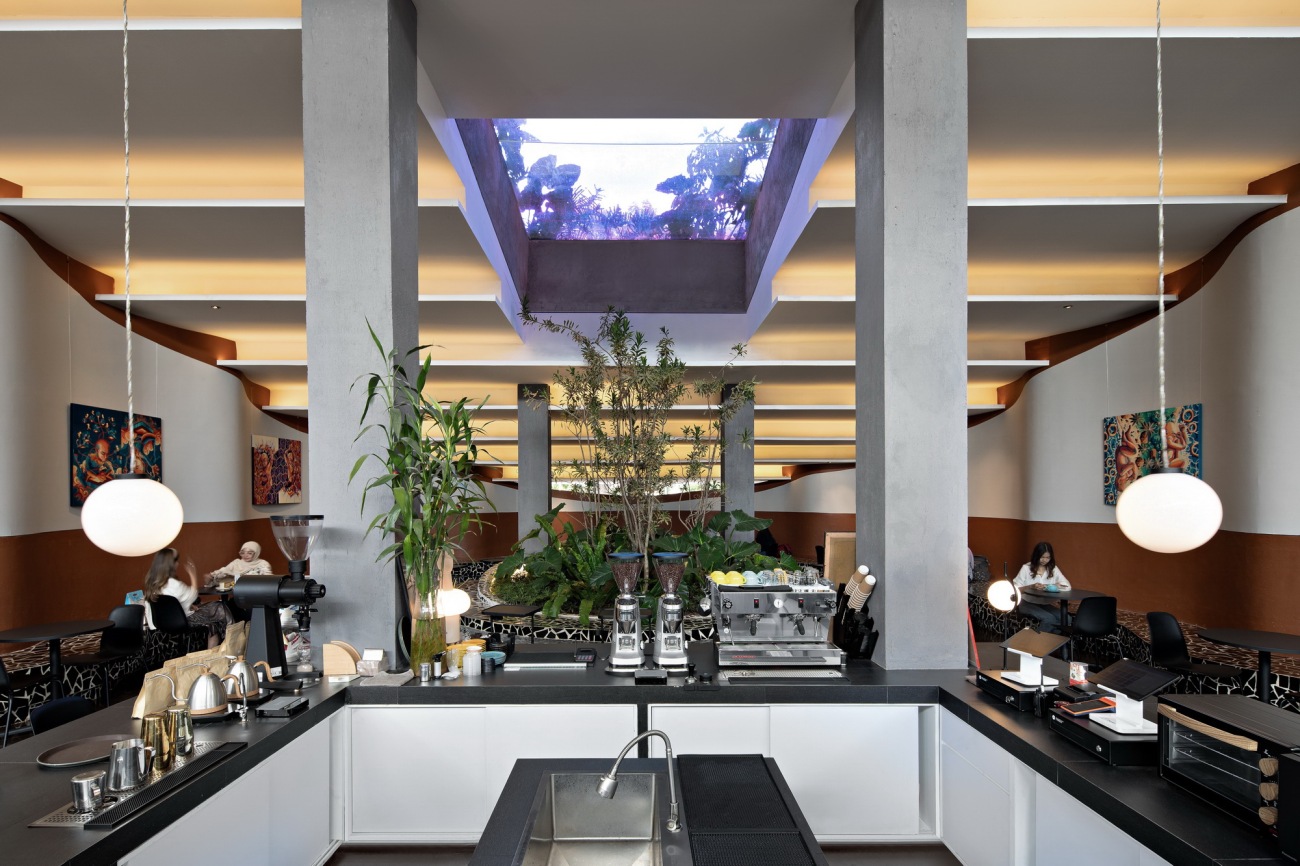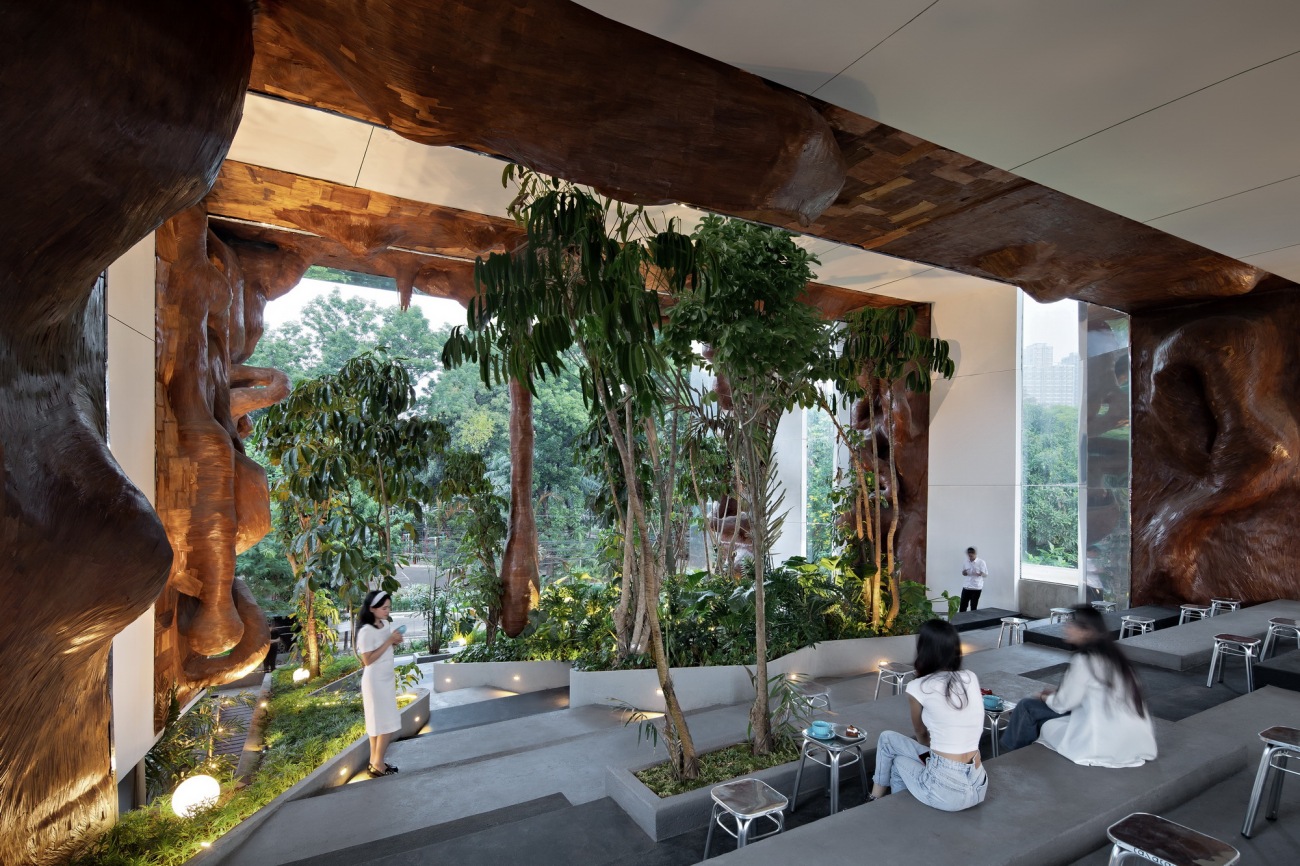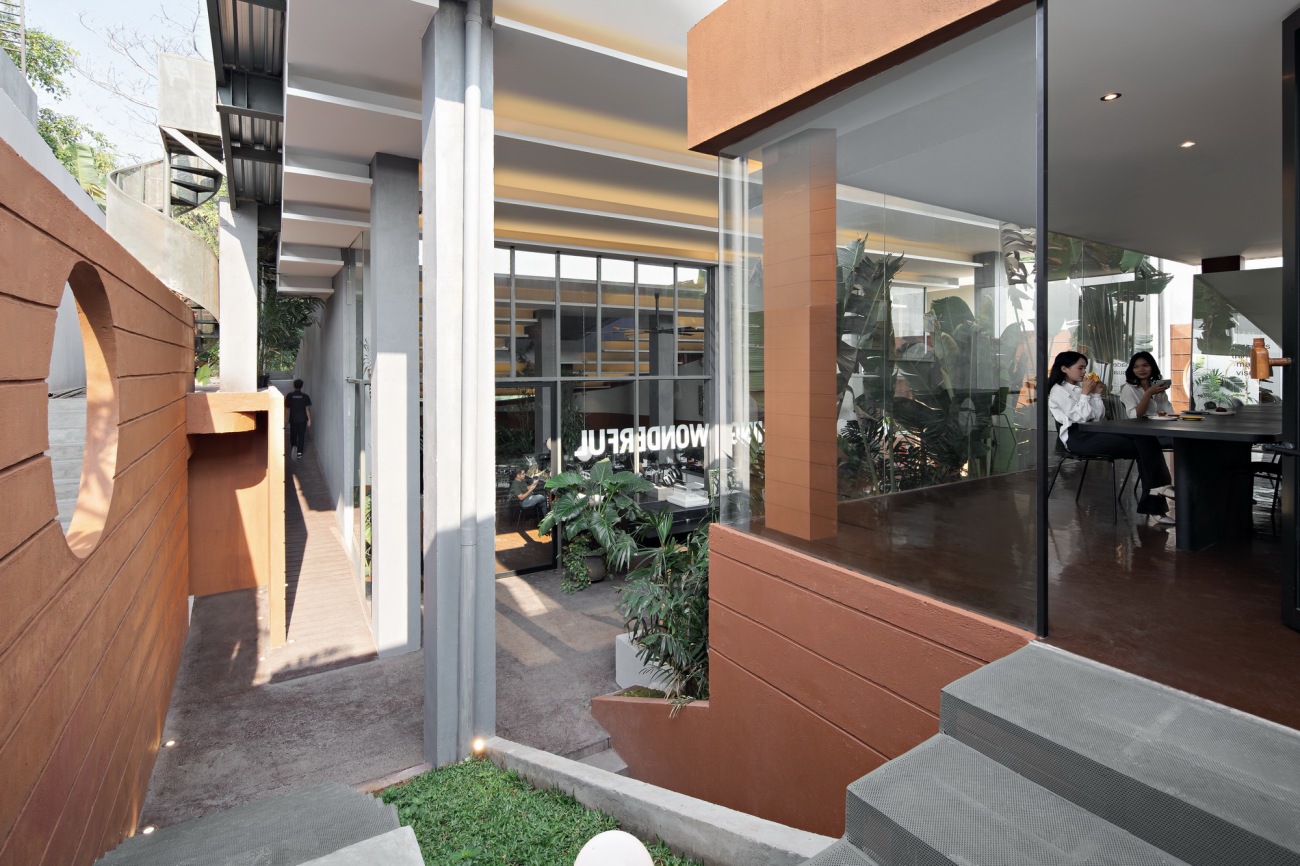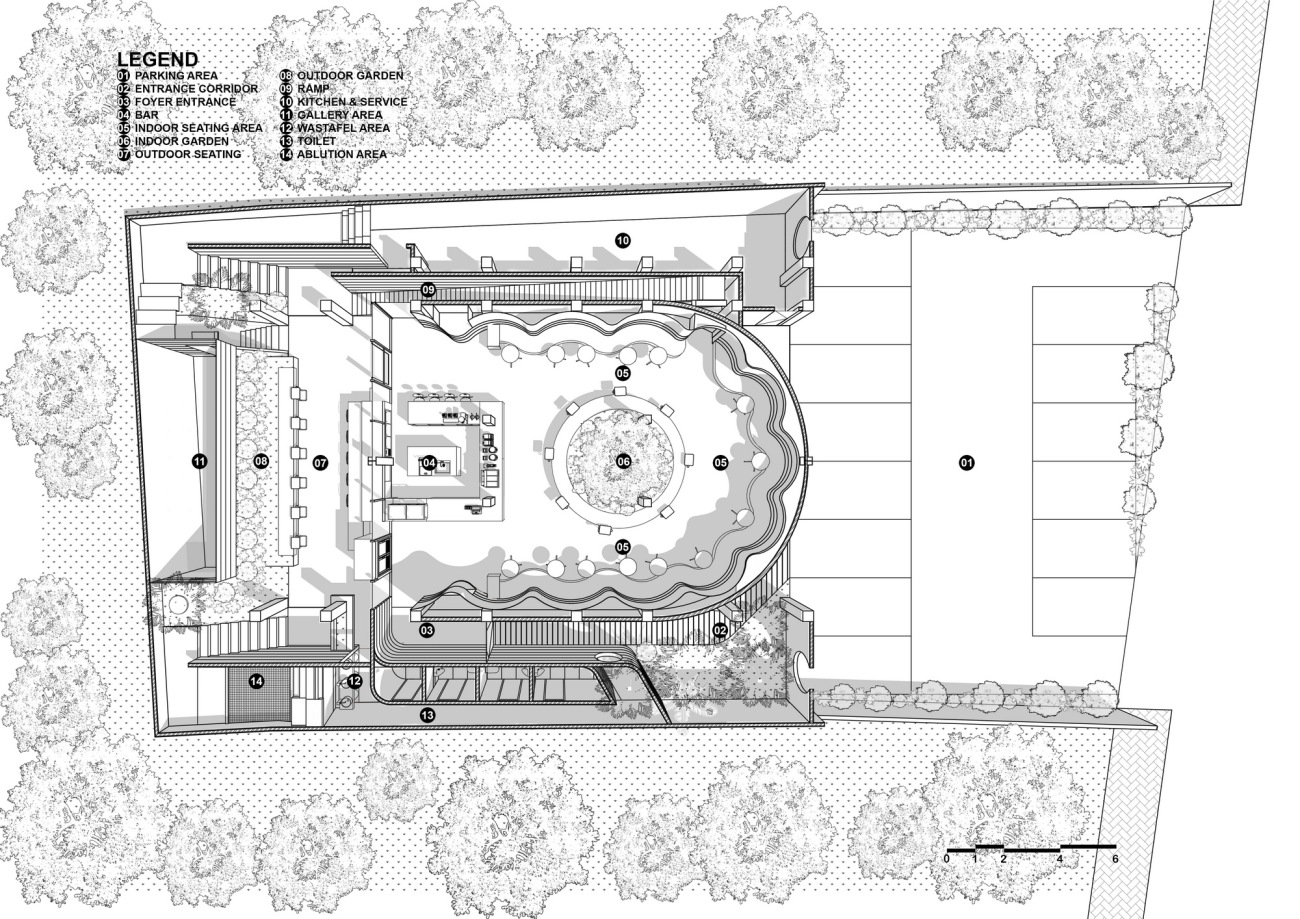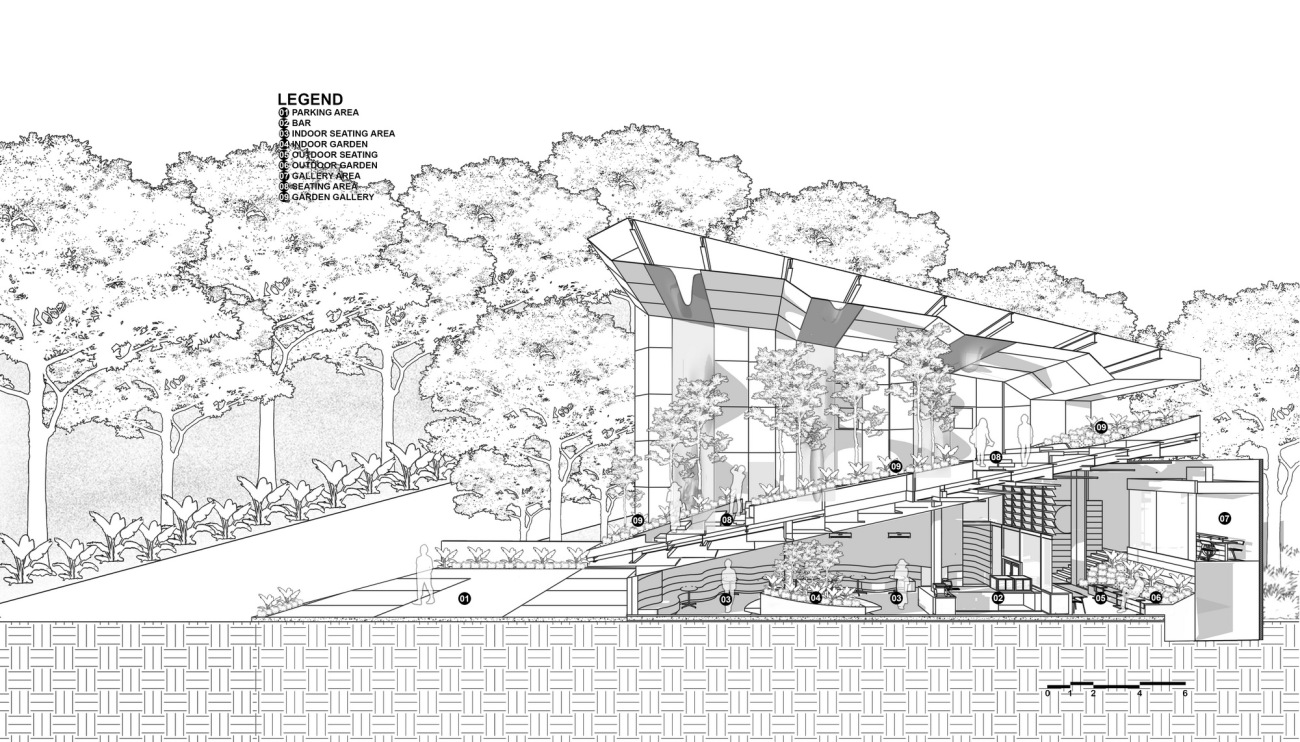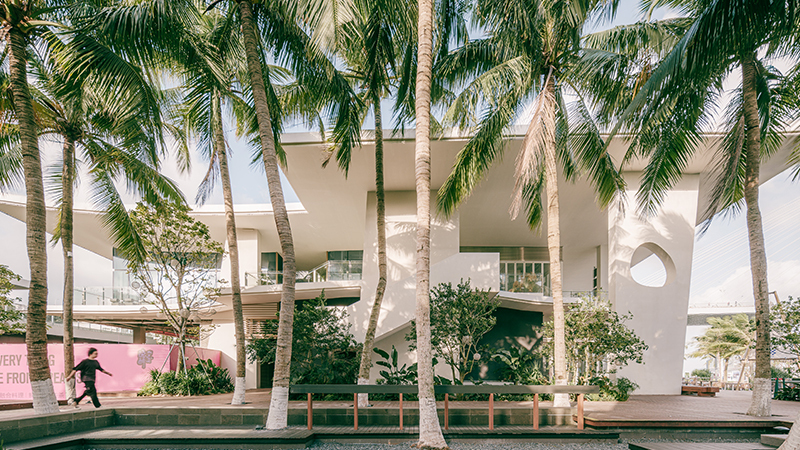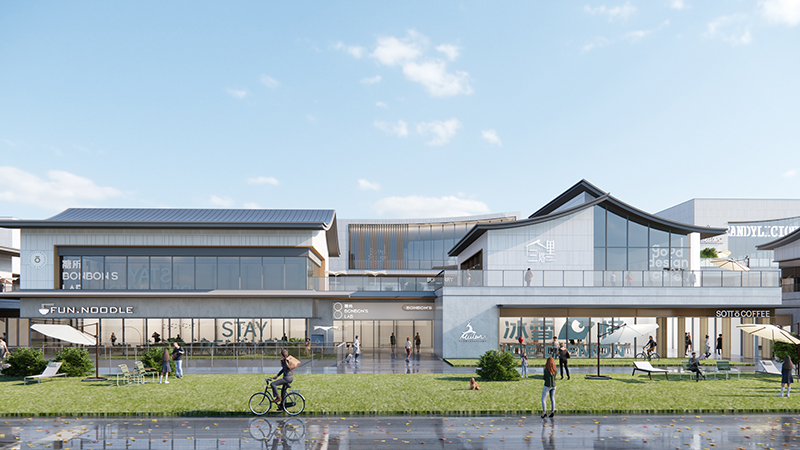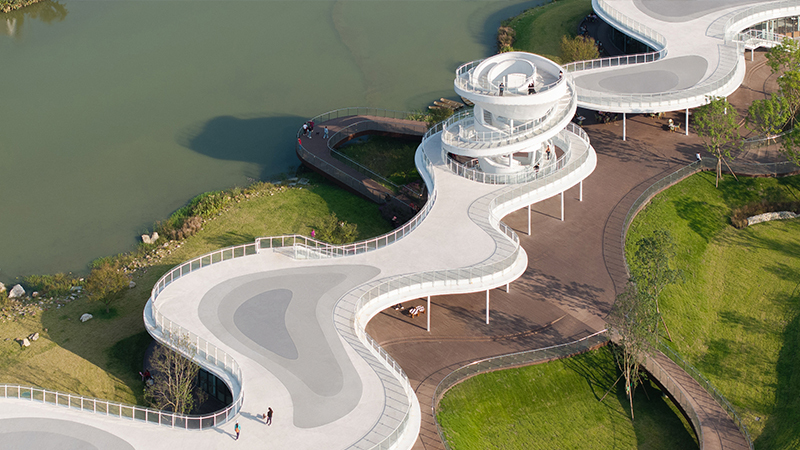名为Tanatap的Frame花园咖啡馆是多层绿色空间的另一个迭代原型,具有动态平台,可以升降,创造出可步行的屋顶景观,作为公众从更好和更宏伟的视角欣赏公园的延伸部分。
Frame garden Café called Tanatap is another iteration prototype of a multi-leveled greenspace with dynamic platforms that rise and fall to create a walkable roofscape that acted as the extension for publics to enjoy public park from a better and grander perspective.
追求无遮挡的建筑,设计始于一个问题:如果社区活动、艺术展览和花园空间的灵活性充当了无限变形的功能立面,定义了空间并塑造了建筑本身的特征,会是怎样的效果。该设计旨在展示一种无私的方法,通过在简单的多层花园中隐藏许多有遮蔽的室内空间。创建出的空间成为一个连续的空间,而不是一个最初的空间。
Pursuing a façade-less architecture, design was started with the question, what if flexibility of community activities, art exhibition, and garden spaces acted as unlimited permutation of functional façade that defines the space and shaped the identity of the architecture itself. The design was to demonstrate a selfless approach to create many sheltered indoor spaces, hidden within a simple multi-leveled garden. Spaces that were created became a sequential space and were not an initial space.
通过有趣的对比将4种类型(不锈钢、艺术品、GRC、玻璃)的框架巧妙地结合在一起,增强了双向透视效果,使游客可以欣赏公园,公园也能将咖啡馆花园的游客视为被框架的艺术对象。建筑师希望这成为一片清新而富有活力的可持续发展的新的公共空间,尤其在像雅加达这样的发展中国家城市,政府运营的公共空间通常不太可靠。
The playful juxtaposition of 4 types (stainless, artwork, GRC, glass) of frames enhanced two way perspective effects for both visitors could enjoy the park, and public park could see the visitor of café garden as the object of art being framed. Architect wanted this to be a refreshing and dynamic new civic space that is sustainable – business wise in developing country cities like Jakarta, where government-run public spaces typically are less reliable.
Frame Garden通过尽可能开放的方式贡献于城市景观,庆祝其高透性。建筑本身只是一个有着双层阴影的框架花园,提供了低能耗的室内区域。花园中间像是绿洲一样的彩虹天窗让夕阳的光线直接照射到室内咖啡馆的中央。通过优化负空间,创造了许多产生因果关系的对比空间。Frame Garden被建立在繁忙的住宅区中,该区域热环境极为恶劣,正如许多其他实验性的Tanatap商业花园设计一样,利用这个特定的位置来证明一个观点,即无论面临多大的宏观环境挑战,一个被动式低能耗的商业设计在热带发展中国家仍然是可行且有利可图的。
Frame garden celebrates its porosity being as open as possible as a contribution to the cityscape. The building was nothing more than just a framed garden, hovering double shaded – low energy indoor area. An oasis like rainbow skylight in the middle of the garden lets the sunset rays penetrate right into the middle of the indoor café. Creating many causal contrast spaces that are produced from optimizing negative section spaces. Built as a commercial garden in the middle of compact residential that has an extremely high thermal environment of Frame Garden, as many other experimental Tanatap commercial garden design, use this particular location to prove a point that regardless the macro environment challenge, a passive low energy commercial design would still be achievable and profitable in tropical-developing country.
这个设计探索了基本几何形状的简约性。设计通过一系列对称的有趣平面雕刻在一楼,以及与之形成对比的有机风貌剧场在二楼,引入了一个强烈的立方体体量。建筑没有正面或背面,可以从各个方向自由接近,并充分利用周围的景观。框架充当了风道效应的催化剂,让游客可以在微风中欣赏公园的景色。
The design explores the simplicity of basic geometry. Design was to introduce a strong volume of cubes, carved by a series of symmetrical playful plan on the ground floor and a contrast of organic amphitheater on the second floor. Without a front or back, the building is free to be approached from all directions while taking advantage of the surrounding landscape. The frames acted as a catalyst for the wind tunnel effect letting visitors enjoy the scenery of a public park in the breeze.
当游客进入Frame Garden时,他们会遇到一个典型的空间表达方式,即宽度和高度都封闭的夹层空间。进入建筑后,游客将踏上一个非常低的天花板下,高度仅为2.2米,随着游客从前花园走到后花园,空间的高度逐渐增加到7.5米。路径通道连接着两个现有的花园,模糊了室内和室外空间之间的界限。进入室内空间时,游客会被切割的天窗和上方花园中的人们活动所吸引。交织而对称的室内空间打开了一个广阔的通道,连接着高达9米的有遮蔽的公共花园,随着游客深入花园,视角会逐渐改变。这些空间引领游客进入主要的宽敞多层花园区域,间接地引导游客享受更多热带花园的乐趣。
As visitors enter the Frame Garden, the typical space expression they will get is the sandwich of closure enclosure of both wide and height of the space. Upon entering the building, they are walking underneath a very low ceiling of 2.2m height that slowly increases the height of space into 7.5m as the visitor walks from the front garden to the back garden on the ground floor. Pathway access that connects 2 existing gardens that blurs the definition of indoor and outdoor space. Upon entering the spaces, they were teased by what appears to be sliced skylight and people activities in the garden above. Weaving yet symmetrical indoor spaces open up a big intro of similar tunnel experiences connecting to 9 m height sheltered public gardens that slowly change perspective as visitors walk upwards deep inside the garden. Spaces that are leading to the main spacious multi-leveled garden area as the ending and indirectly persuading visitors to enjoy more of what a tropical garden could be.
与之前的许多实验性热带咖啡花园一样,RAD+ar 通过一系列浮动花园的阴影优化了自定义的室内外概念,每个小时都为空间投下不同的氛围。通过无缝地借用公园的景观,创造了一个独特的体验,使游客可以享受半户外和室内艺术画廊与人造丛林的融合。开放的布局创造了高效的室内单元流动和吧台区域、共享桌和通道之间的互动。
As many experimental tropical coffee gardens before, RAD+ar has been optimized for a bespoke definition of the inside-outside concept is integrated by series of shades of the floating garden that casted a different ambience every hour, achieved by seamlessly borrowing visual of the public park across, it invites for a unique experience for visitors to enjoy semi outdoor & indoor art gallery blends with man made jungle. The open layout creates an efficient interior unit flow and interaction of the bar area, communal table and circulations.
这个设计被看作是一个实验性的规划,旨在观察和学习当建筑师重新构建空间的层级结构后,用户会如何表现。RAD+ar利用这个项目来进一步了解用户在定义他们不理解的空间时的行为,这就是为什么这个咖啡馆中的大部分家具都是不确定的,与硬质景观和景观特征融为一体,因此作为一个实验,观察游客/用户如何定义他们对这些家具使用时的舒适感的意义。这被视为一个社会实验,观察人们如何不断重新定义他们对第三空间的感知,在开放的空间/花园中并根据一天中不同时间的人群变化而不断改变。
It was designed as experimental programming to see and learn how users will behave once the architect restructures the hierarchy of space. RAD+ar uses this project to learn more about visitor behavior in defining spaces they don’t understand, that is why most of the furniture in this café is undefined, blended with the hardscape and feature of the landscape, therefore acting as an experiment of how visitor/user defines their own meaning of comfort in using this furniture. It was seen as a social experiment on how people keep redefining their sense of third space, in open space/garden and keep changing it to keep up with the crowds at different times of the day.
这个新的咖啡花园将成为当地居民的公共客厅,也是对艺术充满热情的每个人的新激动人心的目的地。这是一个致力于培养好奇心、知识和创造力的空间。接触伟大的艺术和音乐可以具有灵活性和变革力。用充满活力的色彩丰富我们的生活,带我们去我们从未了解过的地方。
The new coffee garden will serve as a public living room for the locals and a new exciting destination for everyone with a passion for the arts. A space dedicated to nourishing curiosity, knowledge and creativity. Exposure to great art and music can be flexible and transformative. Enriching our lives with vibrant colors and taking us places we never knew existed.
由安东尼乌斯·理查德(Antonius Richard)发起,Tanatap试图通过可持续的商业来实现其分散可持续建筑的愿景。在像印度尼西亚这样的发展中国家,该设计致力于在其画廊-商业花园设置中承载一个创意社区。
Initiated by Antonius Richard, Tanatap is trying to stay consistent with its vision to decentralize sustainable buildings through sustainable business. In developing country such as Indonesia, the design was committed to host a creative community in its gallery - commercial garden set up.
▽概念设计,concept design
▽高程图,elevation
▽首层平面图,ground floor plan
▽二层平面图,second floor plan
▽剖面图1,section1
▽剖面图2,section2
▽物理模型,physical model
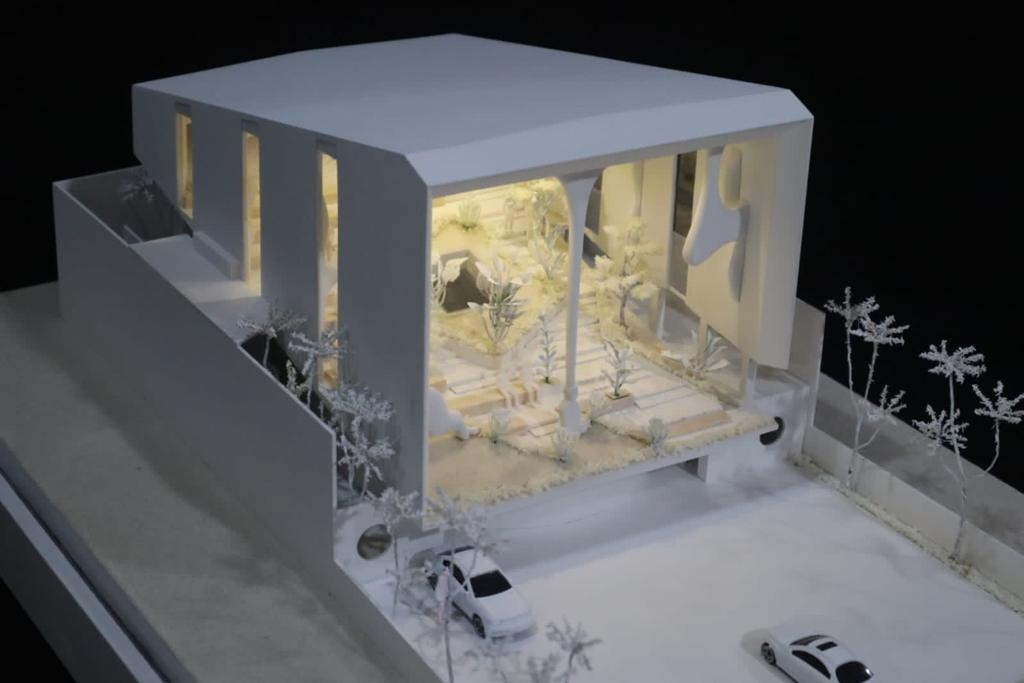 |  |
Main Information
Project Name: Tanatap Frame Garden
Office Name: RAD+ar
Office Website: www.radarchitecture.net
Social Media Accounts: @radarchitects (IG)
Contact email: studio@radarchitecture.net / visionary@radarchitecture.net
Firm Location: Jakarta & Bali, Indonesia
Completion Year: 2023
Gross Built Area (m2/ ft2): 1300 m2
Project Location: Jakarta
Program / Use / Building Function:
Café / Restaurant / Gallery
Lead Architects: Antonius Richard Rusli
Lead Architects e-mail: visionary@radarchitecture.net
Photographer
Photo Credits: Mario Wibowo
Photographer’s Website: mario@mariowibowo.com
Photographer’s e-mail: www.mariowibowo.com
更新日期:2024-03-21 14:39:11
非常感谢 RAD+ar 带来的精彩项目, 查阅更多Appreciations towards RAD+ar for sharing wonderful work on hhlloo. Click to see more works!

